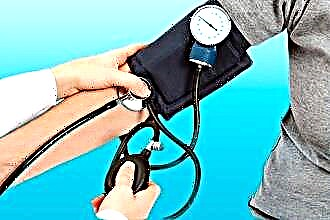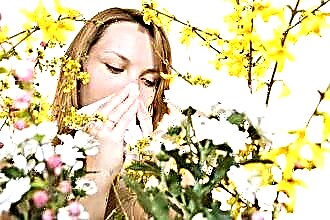Many diseases can manifest themselves with a cough. About 90% of all cases are respiratory diseases of an infectious nature. Moreover, the infection can affect both the upper (these include the nose and pharynx) and the lower (we are talking about the larynx, trachea, bronchi, lungs) pathways. In addition to pathological changes in the organs of the respiratory system, a cough in children may indicate problems with the digestive system, as well as with the heart and blood vessels, cystic fibrosis and some congenital anomalies. The psychogenic children's cough stands apart.
Causes of occurrence
 Given that the causes of cough in children are diverse, you need to be aware that attempts at self-treatment are fraught with unpleasant consequences. For example, if a child coughs up sputum and is given an antitussive drug, it can harm his health.
Given that the causes of cough in children are diverse, you need to be aware that attempts at self-treatment are fraught with unpleasant consequences. For example, if a child coughs up sputum and is given an antitussive drug, it can harm his health.
A similar situation: feed the baby an expectorant while he is suffering from gastroesophageal reflux. In order to avoid the development of complications, the doctor's recommendations cannot be ignored. Especially if the child's frequent cough exhausts him, if because of him the baby cannot eat and sleep normally.
- As already mentioned, in the overwhelming majority of cases, children's cough signals the development of ARVI.
- In second place are the inflamed nose, its paranasal sinuses and pharynx, as well as the adenoids (enlarged tonsils in the pharynx).
- Bronchial asthma. A cough with this ailment can be equivalent to attacks of suffocation characteristic of this disease.
- If the cough appears abruptly and suddenly, there is a possibility of inhaling any foreign object and getting it into the trachea and deeper into the bronchi. This condition is extremely dangerous for the baby's life. Urgent medical assistance is needed.
- A cough can begin due to ailments that have nothing to do with the respiratory system. For example, it can bother children who have been diagnosed with gastrointestinal tract pathologies or heart defects.
- A high level of concentration of harmful substances in the air (cigarette smoke, strong gas pollution), as well as too warm and dry air in the children's room irritate the respiratory system. As a result, the child begins to cough.
- Reflex cough is one of the rare causes. It can appear if there is a pathology of the external ear canal (usually plugs) or the middle ear (otitis media).
Diagnostics
 If you want to consult with a specialist about a child's cough, the first step is to visit the pediatrician. During the appointment, the doctor will ask the parents in detail when the baby started coughing, whether it is wet or dry, what the consistency and color of the separated sputum is when the baby coughs most often (at night or during the day). Also, the doctor will inquire whether asthma attacks occur, whether the baby accidentally swallowed a nut or some small foreign body, whether he has a fever. In addition, parents will have to remember whether coughing attacks depend on weather conditions, air pollution, the presence or absence of physical activity, contact with probable allergens (dust, pollen, and so on).
If you want to consult with a specialist about a child's cough, the first step is to visit the pediatrician. During the appointment, the doctor will ask the parents in detail when the baby started coughing, whether it is wet or dry, what the consistency and color of the separated sputum is when the baby coughs most often (at night or during the day). Also, the doctor will inquire whether asthma attacks occur, whether the baby accidentally swallowed a nut or some small foreign body, whether he has a fever. In addition, parents will have to remember whether coughing attacks depend on weather conditions, air pollution, the presence or absence of physical activity, contact with probable allergens (dust, pollen, and so on).
Significant nuances - whether any of the family members have an allergy or addiction to smoking. The age of the child is also important. Indeed, up to 1 year, completely different drugs are prescribed, as, for example, at 4 years or 5 years.
 The pediatrician may additionally prescribe certain studies to clarify the picture of the disease. Among them - X-ray of the paranasal sinuses and chest. Some studies can only be done in a specialized medical institution.
The pediatrician may additionally prescribe certain studies to clarify the picture of the disease. Among them - X-ray of the paranasal sinuses and chest. Some studies can only be done in a specialized medical institution.
Among other things, the doctor may recommend that the child's parents donate sputum for a microbiological examination, a blood test for antibodies to viruses and other microbes that provoke a cough, and also make allergy tests.
To finally determine the cause of the child's cough, it may be necessary to consult other specialists: for example, a cardiologist, otolaryngologist or allergist.
Cough classification
The duration of the cough is:
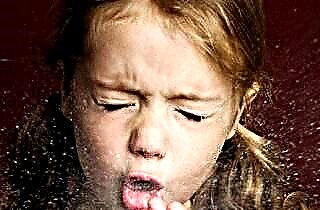 Acute (lasts up to 3 weeks).
Acute (lasts up to 3 weeks).- Chronic (worries the baby for an average of 5 weeks and even longer). Some doctors believe that it can be recorded as chronic only when it was observed more often 4 times within one calendar year. At the same time, the symptoms of acute infection (weakness, high fever, runny nose, and so on) should not be observed.
By its nature, a child's cough is:
- productive ("wet") - with natural secretion of sputum, expectoration;
- unproductive ("dry") - when there is no sputum when coughing.
It should be noted that such classifications are not very accurate. Let's give an example. In children under 5 years of age, an unproductive cough is often accompanied by the presence of phlegm. Only her viscosity is increased, her progress through the bronchi is disrupted due to the unsatisfactory work of the bronchial muscles. Why is it believed that there is no sputum with such a cough? Because outwardly it is not visible, but in fact it is produced.
When studying a productive cough, it is imperative to take into account the characteristics of sputum. Sputum, which acquires a yellow-greenish color during the acute stage of the disease, may indicate the onset of the development of chronic bronchitis. If it contains a blood impurity, tuberculosis can be suspected.
With a wet cough, children who have not yet turned 4 years old swallow phlegm, since they simply have not yet learned how to cough it up. And this can introduce an error in the assessment of cough. Indeed, as already mentioned, the sputum of babies under 5 years old is characterized by increased viscosity. Therefore, it departs much worse than in older children and, even more so, in adults.
Features of treatment in children
 Even in the case when parents are 100% sure that they know how to treat a cough in their child, you need to trust the doctor. It is extremely difficult to establish an accurate diagnosis on your own. And the correct treatment can be prescribed only after the specific reason for the appearance of this symptom has been clarified. The cough last time and at the moment can start for completely different reasons. Accordingly, treatment should also be different.
Even in the case when parents are 100% sure that they know how to treat a cough in their child, you need to trust the doctor. It is extremely difficult to establish an accurate diagnosis on your own. And the correct treatment can be prescribed only after the specific reason for the appearance of this symptom has been clarified. The cough last time and at the moment can start for completely different reasons. Accordingly, treatment should also be different.
For a coughing child, you need to make a sparing day regimen. At the same time, one should not impose cardinal restrictions on its activity. After all, movement helps the bronchi to clear of mucous accumulations, thereby accelerating recovery. If the kid wants to play, take part in the game. Of course, running and jumping is undesirable. It is best to prefer games from the calm category.
Nutrition, like the regime, should be gentle, that is, dietary. If your child flatly refuses to eat, you cannot even try to force him to eat anything. It will be much more beneficial if you offer him light high-calorie delicacies: fruit puree, warm milk cocktail, jelly or jelly. It is not scary if the baby eats less for 2 or 3 days than before the illness. But if the child refuses food for 5 days, it is worthwhile to be wary.
 As for drinking, it will take a lot. The fact is that the liquid helps to remove toxic substances from the body, and also helps well to liquefy and remove phlegm. Make different juices and his favorite drinks for your baby, get colorful straws and a funny cup. Think of anything to get your child drunk.
As for drinking, it will take a lot. The fact is that the liquid helps to remove toxic substances from the body, and also helps well to liquefy and remove phlegm. Make different juices and his favorite drinks for your baby, get colorful straws and a funny cup. Think of anything to get your child drunk.
The main task in the treatment of dry cough is to turn it into a wet cough as soon as possible, which is productive. For this purpose, you can give your baby a lot of alkaline warm drinks. Provided that the body temperature is within the normal range.
In addition, it is permissible to use warming compresses and some medications. True, the latter should be given to the child strictly according to the doctor's prescription. A wet cough is treated with mucolytics and drugs that have an expectorant effect.
What drugs are used
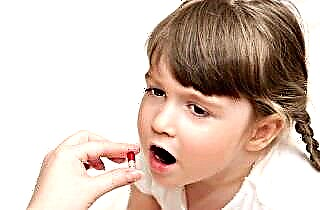 Mucolytics. If on 3 or 4 days of the course of the disease, the dry cough has not turned into wet, and the child cannot cough up sputum, it is recommended to start treatment with modern mucolytics from the 5th day. He showed himself excellently in this (contained in the preparations "Fluimucin", "Mukobene", "ACC"). This substance in a short time makes snot, pus, phlegm liquid. In addition, these drugs fight inflammation. For children under 5 years of age, there is a separate form of the drug - "ACC-100".
Mucolytics. If on 3 or 4 days of the course of the disease, the dry cough has not turned into wet, and the child cannot cough up sputum, it is recommended to start treatment with modern mucolytics from the 5th day. He showed himself excellently in this (contained in the preparations "Fluimucin", "Mukobene", "ACC"). This substance in a short time makes snot, pus, phlegm liquid. In addition, these drugs fight inflammation. For children under 5 years of age, there is a separate form of the drug - "ACC-100".- Mucoregulators. These funds are characterized not only by a mucolytic effect. They also restore the full activity of the cells of the mucous membrane lining the bronchi. After all, it is this shell that is responsible for the production of the secret. Among the drugs in this category, drugs are most often prescribed, the main active ingredient of which is ("Mukopront", "Mukodin", "Bronkatar").
- Antitussive drugs. They are prescribed only when the child is already exhausted by a debilitating dry cough. Attacks of such a cough can end with vomiting, chest pains. For example, with whooping cough, it is also accompanied by disturbances in appetite and sleep. It is forbidden to use them yourself. These medicines include Codeine (contains a narcotic substance) and Sinekod, Tusuprex, Glauvent (does not contain narcotic substances), as well as Libexin.
- Antibiotics Such serious drugs for the treatment of childhood cough are prescribed by a doctor only as a last resort. We emphasize that only a specialist can determine which type of therapy will be the most effective and appropriate for coughing - anti-inflammatory, antibacterial or some other. The same should be said about a bronchodilator - drugs to expand the lumen of the bronchi.
If, in addition, the throat is reddened
 If you see a red throat in a child and hear a cough, of course, such symptoms cannot be ignored and you cannot think that it will go away by itself. But you don't need to panic either. With a very high probability, the baby simply has a cold. And this is not at all a rare occurrence.
If you see a red throat in a child and hear a cough, of course, such symptoms cannot be ignored and you cannot think that it will go away by itself. But you don't need to panic either. With a very high probability, the baby simply has a cold. And this is not at all a rare occurrence.
So, if a child has a sore throat and an incipient cough is already heard, it is necessary to immediately determine bed rest for the baby and begin to actively fight the cold. Then there is every chance to recover quickly. Inhalation and hot foot baths, in particular, will help speed up recovery.
Inhalation can cure not only a red throat, but also a cough. The healing properties of such procedures are in the fight against inflammation (its bright sign is a red throat), as well as in a beneficial effect on the mucous membrane lining the respiratory tract.
For one inhalation, it is advisable to use no more than 2 drugs at the same time. Sage infusion and fir oil have proven their worth. The first ingredient is an excellent natural antiseptic (disinfectant), and the second provides a productive coughing up of phlegm, which interferes with proper breathing.
 The duration of the procedure, which will help cure cough and red throat, should be no more than 10 minutes. It is pointless to prolong the inhalation: the infusion cools down, and the baby manages to get tired of this sad lesson. In order to captivate the child, you can let him watch the hourglass.
The duration of the procedure, which will help cure cough and red throat, should be no more than 10 minutes. It is pointless to prolong the inhalation: the infusion cools down, and the baby manages to get tired of this sad lesson. In order to captivate the child, you can let him watch the hourglass.
It is necessary to do from 3 to 5 inhalations per day. The procedure should be carried out one hour after eating. After it, you can neither eat nor talk for 30 minutes. Otherwise, the sore throat when coughing will return.
Hot foot baths can be done by almost everyone. The only contraindication is an increased body temperature in a child. To cure a cough and a red throat, you need to take about 10 minutes to steam your legs. By the way, the water temperature should gradually rise. You should start at 37 degrees and finish at 40-45 degrees. The effectiveness of such a bath will increase if you drip a little fir oil into the water.
Preventive measures
- Do not overheat the baby. A large number of warm clothes pulled over a child can be justified only at the North Pole. How to check if the baby is comfortable in the clothes that you put on him? Feel his palms and feet. If they are warm and not wet, then you have dressed your baby for the weather.
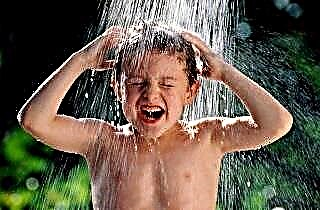 To make the child less likely to get colds, you need to pay attention to hardening. It is advisable to start literally from the first days of his life. Pouring, bathing and air baths in a well-ventilated room are especially useful for toddler.
To make the child less likely to get colds, you need to pay attention to hardening. It is advisable to start literally from the first days of his life. Pouring, bathing and air baths in a well-ventilated room are especially useful for toddler.- In the cold season, when various viral infections break out every now and then, try not to appear at events where many people gather. If among family members someone has caught something cold and infectious, immediately isolate him from the rest. Don't forget to set aside dishes for him. If it is impossible to fence off the sick person, he must be at least in a gauze bandage.
- It is also necessary to strengthen the health of the crumbs with the help of a complete, vitamin-rich diet. In the winter and spring seasons, it is advisable to drink a course of complex vitamins. The duration of such a course is 2-3 months.
- If diseases of the respiratory system are constantly repeated and become chronic, such children need to be healed in sanatoriums.
Let's summarize
 The most important prerequisite for the successful treatment of a child's cough is an atmosphere of calm and comfort. The room where the sick child is located must be constantly kept clean and warm. It is imperative to monitor the level of humidity. Don't show your child your anxiety, even if you panic. Take it easy, check with your doctor and continue caring for your little one without fussing.
The most important prerequisite for the successful treatment of a child's cough is an atmosphere of calm and comfort. The room where the sick child is located must be constantly kept clean and warm. It is imperative to monitor the level of humidity. Don't show your child your anxiety, even if you panic. Take it easy, check with your doctor and continue caring for your little one without fussing.
It is necessary to treat a cough only when it negatively affects the general well-being of the child. In such cases, it loses its protection function and becomes a malicious factor. True, such cases in children are rare.
And once again we emphasize: before starting treatment (with pharmaceutical preparations or traditional medicine), you should definitely visit a doctor. Self-medication is inappropriate, and sometimes even dangerous to the health of the baby.

 Acute (lasts up to 3 weeks).
Acute (lasts up to 3 weeks). Mucolytics. If on 3 or 4 days of the course of the disease, the dry cough has not turned into wet, and the child cannot cough up sputum, it is recommended to start treatment with modern mucolytics from the 5th day. He showed himself excellently in this (contained in the preparations "Fluimucin", "Mukobene", "ACC"). This substance in a short time makes snot, pus, phlegm liquid. In addition, these drugs fight inflammation. For children under 5 years of age, there is a separate form of the drug - "ACC-100".
Mucolytics. If on 3 or 4 days of the course of the disease, the dry cough has not turned into wet, and the child cannot cough up sputum, it is recommended to start treatment with modern mucolytics from the 5th day. He showed himself excellently in this (contained in the preparations "Fluimucin", "Mukobene", "ACC"). This substance in a short time makes snot, pus, phlegm liquid. In addition, these drugs fight inflammation. For children under 5 years of age, there is a separate form of the drug - "ACC-100". To make the child less likely to get colds, you need to pay attention to hardening. It is advisable to start literally from the first days of his life. Pouring, bathing and air baths in a well-ventilated room are especially useful for toddler.
To make the child less likely to get colds, you need to pay attention to hardening. It is advisable to start literally from the first days of his life. Pouring, bathing and air baths in a well-ventilated room are especially useful for toddler.